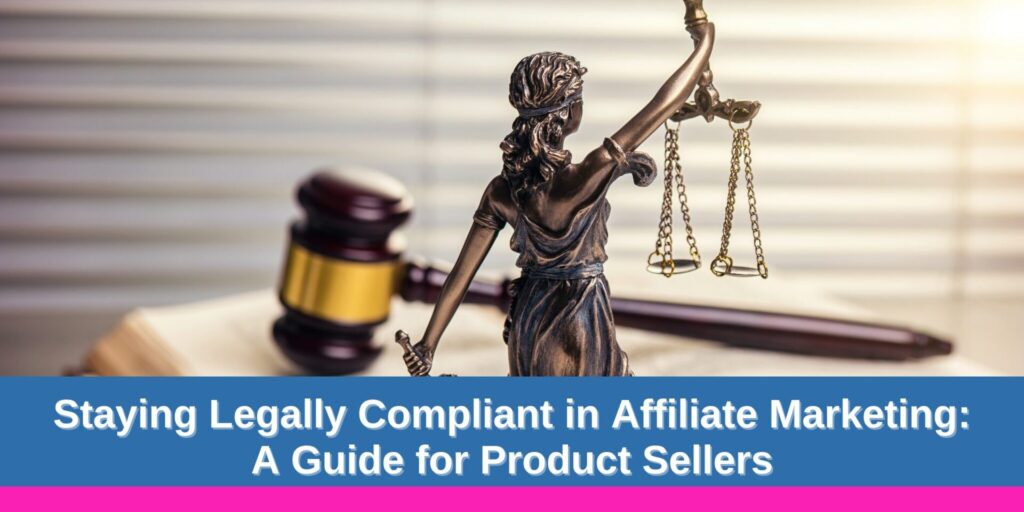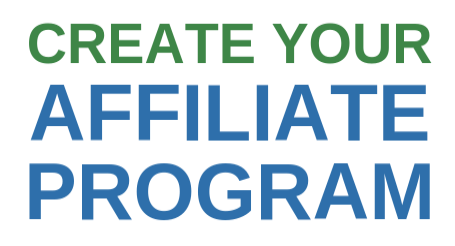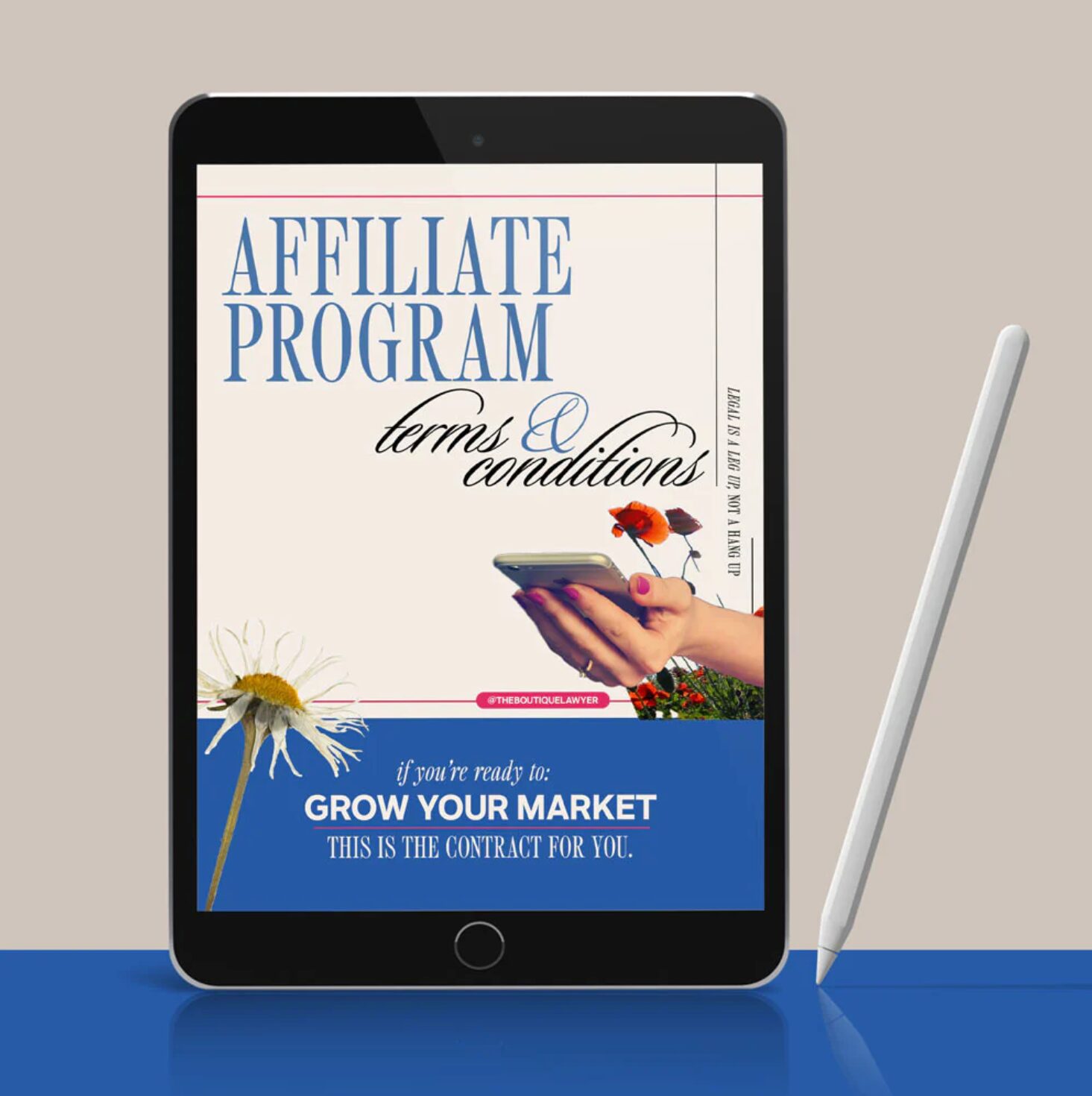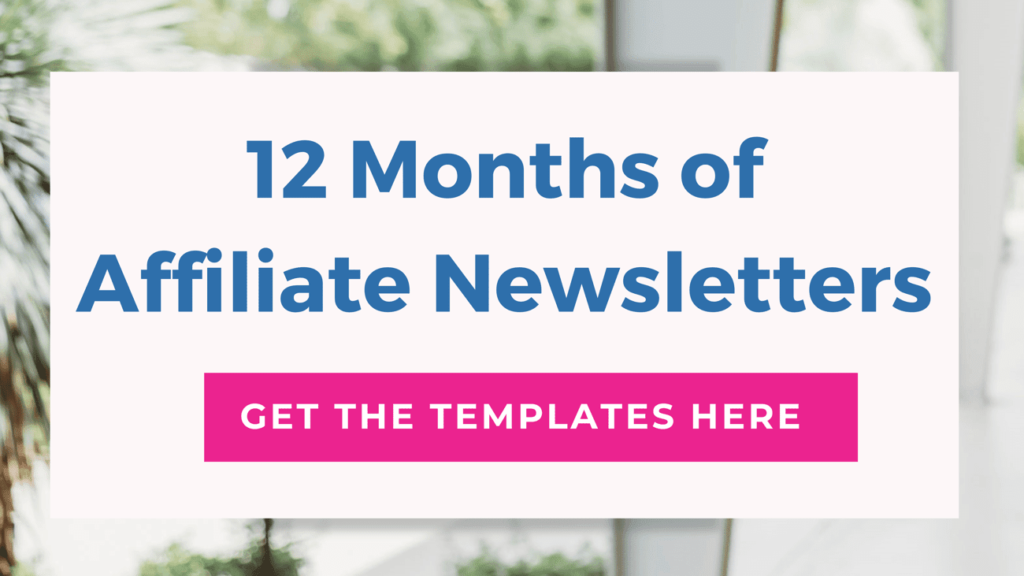Staying Legally Compliant in Affiliate Marketing: A Guide for Product Sellers

Note from Kelly: Before we dive into the good stuff, I wanted to let you know that some of the links in this blog are affiliate links. This means if you decide to make a purchase through these links, I may earn a commission at no extra cost to you. I only recommend a product when I 100% believe in its value and think it could be beneficial for you.
_______________________________
Guest Blog by Amber Gilormo, Esq. | The Boutique Lawyer
Let’s dive into the legal side of affiliate marketing, shall we? Picture this: you’ve got this epic circle of friends (aka affiliates) raving about your products online. They’re your hype crew, your cheerleaders, the PB to your J. But here’s the kicker: the Federal Trade Commission (FTC) is like that attentive neighbor who’s always peeking over the fence, making sure everyone plays by the rules in this affiliate marketing block party.
So, how do you keep your affiliate party pumping without getting the cops FTC called on you? Simple: you have to make sure your affiliates are properly disclosing those affiliate links when they share about your products with their audience.
Here are three easy spots to remind your crew about those all-important FTC guidelines, so that everyone gets to keep the money they make (instead of having to pay it all back to the FTC, which is what happens when you don’t follow the rules and get caught).
The Boutique Lawyer’s Guide to Keeping Your Affiliate Marketing on the Right Side of the Law (And the FTC!)
1. The Rule Book: Affiliate Program Terms & Conditions
The foundation of a legally compliant affiliate program lies in its terms and conditions. This document should serve as the rulebook for your affiliates, clearly outlining the expectations, processes, and legal requirements of your program. Including a section on FTC compliance is non-negotiable.
Here, you should:
- Specify the necessity of clear and conspicuous disclosures on all promotional content that earns them commission. This means affiliates must clearly state they might receive compensation for promoting your products.
- Define the acceptable formats and placements for disclosures to ensure they are easily noticed and understood by the audience.
- Incorporate examples or templates of compliant disclosures to guide your affiliates towards proper implementation.
By embedding these guidelines into your program’s terms and conditions, you establish a clear legal framework that educates your affiliates and protects your business.
Pro-tip: The Boutique Lawyer’s Affiliate Program Terms & Conditions template has all this covered for you and more.
2. The Welcome Wagon: Affiliate Onboarding Goodies
First impressions matter, and the onboarding process for your affiliates is a golden opportunity to stress the importance of FTC compliance.
Create comprehensive onboarding materials, such as:
- Training videos and webinars that walk new affiliates through the basics of FTC rules and show how to incorporate disclosures effectively. Even something like a quick reminder in a welcome video about the need to disclose affiliate links will go a long way here.
- Digital handbooks or guides give them resources on compliance, offering insights into why it’s crucial not just for legal reasons but for maintaining trust with their audience.
These resources not only serve as educational tools but also demonstrate your commitment to ethical marketing practices from day one.
Wouldn’t you know it? The Boutique Lawyer has you covered here too with their Affiliate Marketing Guide that is automatically included with your purchase of the Affiliate Bundle. This guide has sample disclosure language and email templates for you to send to your affiliates reminding them of the FTC guidelines.
3. The Reminders: Regular Communication
Ongoing education and reminders are key to ensuring long-term compliance.
Utilize regular communication channels like:
- Affiliate email newsletters to share updates on FTC regulations, provide tips on best practices, and highlight common mistakes to avoid.
- Reminder again during campaigns and live launches. It’s always a great idea to drop a short reminder about the need to disclose affiliate links whenever you are doing a campaign or marketing push to your affiliates.
This continuous dialogue keeps FTC compliance top of mind for your affiliates and fosters a culture of transparency and responsibility.
FTC Compliance Made Easy
Folks, wrapping your affiliate program in a cozy blanket of FTC compliance isn’t just about dodging legal bullets; it’s about building a brand that’s as trustworthy as your best friend. Weave these reminders into the very fabric of your affiliate interactions, and you’re not just complying with the law; you’re setting the gold standard for trust and transparency in the digital age.
Implementing each of these into your business can be the thing that protects you from having to deal with a disgorgement lawsuit from the FTC.
Because yes, the FTC checks for these things and the worse case scenario is that you could get sued. 😅
And just take it from someone who has had a front row seat to a lot of lawsuits… you don’t want that headache.
So go ahead and do the simple and smart thing NOW to avoid any of that craziness later!
In The Boutique Lawyer Contract Shop, you’ll find everything you need to implement as soon as today and you can purchase each contract individually OR grab a bundle that has everything you need wrapped into one.
If you’re running an affiliate program, having solid Terms and Conditions is non-negotiable. Typically, these terms are presented to affiliates upon their registration to your program. While it may seem like a formality, it's a critical step towards establishing a mutually beneficial and legally sound affiliate program.




